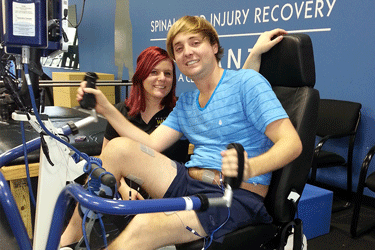Researchers say wearable technology and AI used to collect data could help find treatments for rare disorders.
In two studies published in Nature Medicine, a team of AI and clinical researchers have shown that wearable technology and AI can help speed up the search for treatments.
By combining human movement data gathered from wearable tech with medical AI technology, researchers were able to identify clear movement patterns, predict future disease progression, and significantly increase the efficiency of clinical trials in two very different rare disorders, Duchenne muscular dystrophy (DMD) and Friedreich’s ataxia (FA).
Tracking the progression of FA and DMD is typically done through intensive clinical testing. The papers offer a significantly more precise assessment that also increases the accuracy and objectivity of the data collected.
There are currently no cures for either disease, but researchers hope the results will significantly speed up the search for new treatments.
“Our approach gathers huge amounts of data from a person’s full-body movement – more than any neurologist will have the precision or time to observe in a patient,” said Aldo Faisal, senior author of both papers. “Our AI technology builds a digital twin of the patient and allows us to make unprecedented, precise predictions of how an individual patient’s disease will progress.”
The researchers estimate that using these disease markers means that significantly fewer patients are required to develop a new drug than current methods. The need for fewer patients is significant for rare diseases where it can be hard to identify suitable patients.
Scientists hope that in addition to using the technology to monitor patients in clinical trials, it could one day be used to monitor or diagnose a range of common diseases that affect movement behavior, such as dementia, stroke, and orthopedic conditions.
“We believe that the same AI technology working in two very different diseases shows how promising it is to be applied to many diseases and help us to develop treatments for many more diseases even faster, cheaper, and more precisely,” said Faisal.
Photo 95793273 © Vchalup | Dreamstime.com





